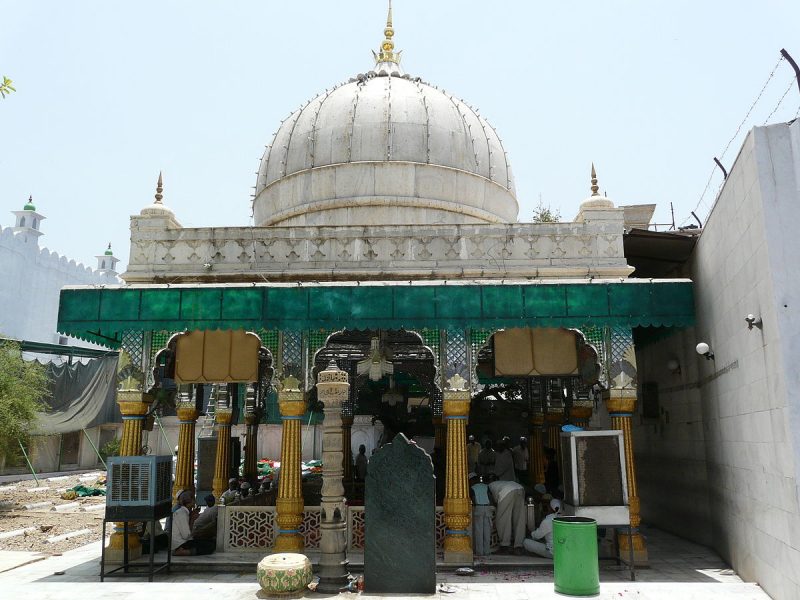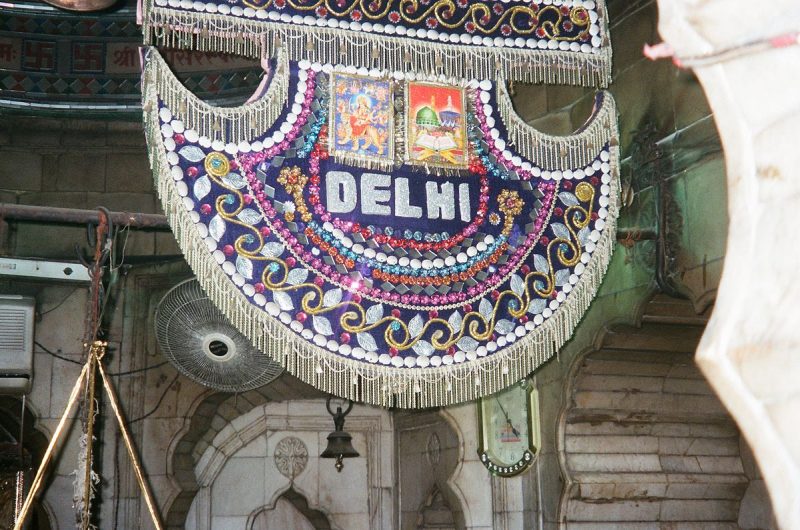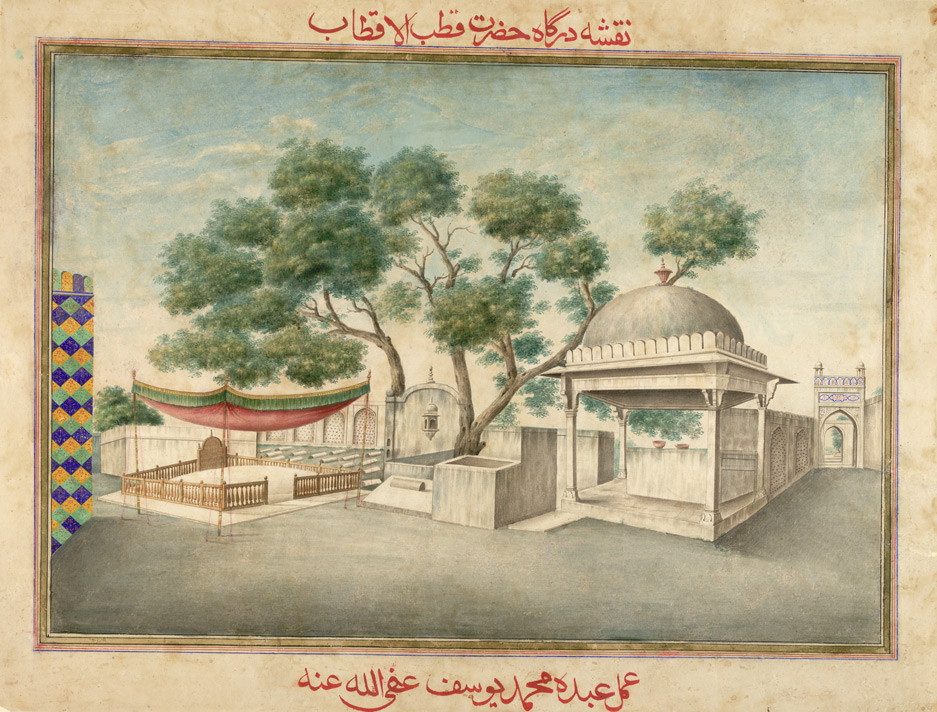Most of us know who built the Qutb Minar. The Delhi Sultan Qutb-ud-din Aibak commissioned it in 1199 as a tower to commemorate the victory of his master and mentor, Mohammed Ghori. He died before he could complete it; therefore, his successor, Iltutmish completed it 20 years later. Iltutmish named it after his own master and predecessor, Qutb-ud-din Aibak. Did he, really? Some historians think that Iltutmish had a different Qutb-ud-din in mind when he christened the tower: Qutb-ud-din Bakhtiyar Kaki!
[Detour: While this story is about the ‘Other Qutb’, we have another story about the ‘Other Minar’ at the Qutb complex too. Watch that short video here.]
Qutb ul Aqtab Khwaja Sayyid Muhammad Bakhtiyar Al Hussaini Qutb-ud-din Bakhtiyar Kaki (Kaki) was originally from Kyrgyzstan, but settled in Delhi sometime around 1210 CE. He is believed to have been a descendant of Prophet Mohammed himself, through Mohammed’s grandson Husayn. He apprenticed under the famous Sufi Saint, Khwaja Moinuddin Chishti of Ajmer, and became a venerated Sufi saint himself. The Sufis are a special order of Muslim monks who believe in universal love and brotherhood. They advocate peace and charity towards all. Chishti encouraged Kaki to go to Delhi and spread Sufi philosophy, and Kaki became a Delhi citizen.
At Delhi, he regularly preached about seeking God through universal love. In his ‘Majlis’ or gatherings, there was divine poetry, singing and dancing and people joyously participated. People of all faiths, the rich and the poor, attended the Majlis. Amongst his many admirers were people in power; that included the Sultan Iltutmish himself. But Kaki distanced himself from power and wealth, and lived a life of poverty.
According to popular tradition, this became a problem for his wife. She needed bread to run the household and often ran up debts with the baker! When Kaki noticed this, he advised her not to beg from the baker but to go to a corner in the house and ask God directly. Miraculously, due to Kaki’s spiritual powers, she got Kaak (a form of bread popular in Central Asia). Kaki was a modest man, so he told his wife never to talk about this miracle to anyone. If she did, he warned her, the miracle would automatically stop working. She complied with her husband’s words. But when she stopped going to the bakery, the baker got worried: had he somehow offended the holy man? So, the embarrassed baker apologised profusely to her. She felt sorry for the distraught baker, so she revealed the truth about the miracle. And exactly as her husband had predicted, the bread stopped coming from the corner. But her husband was soon acclaimed as Kaki, the man who miraculously produced Kaak!
Years passed. Once a Sufi poet recited a devotional poem to Kaki. That sent Kaki into an ecstatic trance. He never woke up and died soon after. His Will was then read out. Indeed, he had no earthly treasure to leave, but the Will spoke of how his funeral should be conducted. It declared that only a person who sincerely recited all the daily prayers, without missing any of them, and never committed any of the sins proscribed by the Quran, should lead the procession. This was a tough condition even for long-time Muslim devotees, so no one came forward to lead the funeral. At last, Sultan Iltutmish himself came forward as a pious Muslim. He tearfully announced that he never wanted to advertise his piety, but the saint’s command had now forced him to. Thus, his funeral was led by the king himself!

So, is the Qutb Minar named after the Sultan, or the Sufi? Your guess is as good as ours!
{For more stories of the Qutb Minar, download the Storytrails audio tour of Qutub Minar and experience the monument in your own time, at your own pace.}

Some more trivia: Kaki’s fame never declined. During the final years of the Mughal rule, the British Resident banished the Mughal prince Mirza Jahangir from Delhi. His mother Queen Mumtaz Mahal (not to be confused with Shah Jahan’s wife) prayed at Qutb-ud-din Kaki’s Dargah (shrine over a saint’s grave) that she would decorate the Dargah and the nearby Yogmaya Hindu shrine with floral fans if he returned. Apparently, he did return and the tradition of decorating these two shrines is celebrated every September to this day. That festival, called Phool Walon ki Sair, is important to both Muslims and Hindus. The Dargah was also the place from where Gandhiji exhorted the Muslims and non-Muslims to re-unite during the Partition riots.

Archives
- January 2022
- December 2021
- November 2021
- August 2021
- March 2021
- February 2021
- January 2021
- December 2020
- November 2020
- October 2020
- September 2020
- August 2020
- April 2020
- March 2020
- February 2020
- January 2020
- November 2019
- October 2019
- September 2019
- August 2019
- July 2019
- June 2019
- August 2017
- February 2017
- January 2017
- October 2013
Featured Posts
- Tales that pots tell: Keeladi excavations AUGUST 18, 2021
- The Last Grand Nawab: Wallajah FEBRUARY 10, 2021
- How Tej Singh became Raja Desingu of Gingee FEBRUARY 5, 2021
- How Shahjahan seized the Mughal throne JANUARY 28, 2021
- Alai Darwaza – Qutub Minar Complex, Delhi NOVEMBER 21, 2020
- Marking History through British buildings NOVEMBER 17, 2020
- The last great queen of Travancore NOVEMBER 7, 2020
- Brahmi and the evolution of scripts OCTOBER 15, 2020
- The Cambodian King of Kanchipuram OCTOBER 14, 2020
- James Prinsep – the man who read the writing on the wall OCTOBER 10, 2020
- Mariamman – the Village Goddess who travelled SEPTEMBER 30, 2020
- Misnamed Monuments of Mamallapuram SEPTEMBER 28, 2020








